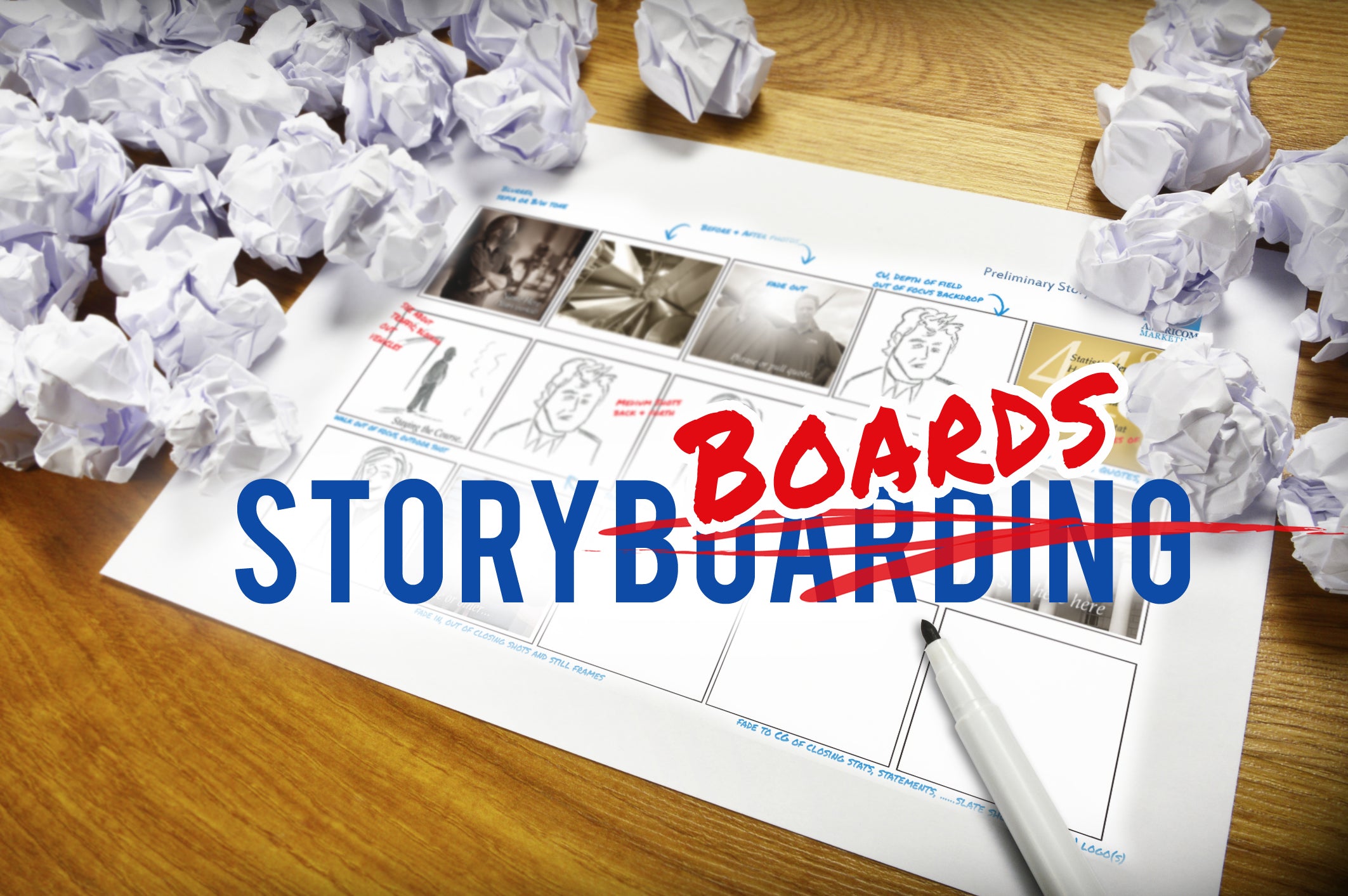
Why storyboard? You have a script idea, a shot sheet and
plenty of notes that no one plans on reading. You have a team or at least one
nerdy guy in the room who knows what to do, right? So why storyboard? Why not
skip the storyboarding and get in an early round of golf?
Storyboarding is critical in what we do at Americom Marketing. We use it for creating TV commercials, video presentations, web banners, sales presentations and more. It’s the basic form of providing a visual, frame by frame, to better communicate your idea or your message. We sketch or drop in photos to use as examples/goals/visual representations for how we hope things to go for a shoot and edit. By illustration what is filling the shot, how close up an interview looks, or how wide of a shot we want in order to show emotion, we can give a glimpse through our lenses to our brainstorming sessions, to our clients, or to our editor. It’s no different from the comic strips in the Sunday paper or hieroglyphics centuries ago. It’s messy, it’s time-consuming and even may seem redundant during the process. But it may be the very thing that seals the deal.
Because it is time-consuming, we find a lot of ad agencies opt not to do them anymore. Seriously, it just takes too long so they choose not to do it. They jot down a few notes or work through it as they go. Or worse, they just leave it up to the videographers and video editors to make good choices. It’s less stress for them, less actual work, and they know it will get done and all will be fine. That’s fine, but as a client, what are you paying for? At Americom, we pride ourselves on putting in the work. We work with video and production teams, freelance designers, copywriters and various other media resources as the gig calls for it; but it starts and ends with us. Sure, we work with award-winning talent who make great choices for us in the edit bay, but we don’t just cross our fingers and hope for the best. In the end, it ultimately saves the client money and produces a greater result along with a smoother experience for all parties involved. Starting with a storyboard allows us to get creative, color outside of the lines and plan ahead for what the message really calls for instead of shooting from the hip as we go. We use sketches, post-it notes, and trusty ol’ Sharpies to put it down on paper. This helps the clients – who do NOT do production every day – actually see how it comes together, thus, extending their trust in the creative plan. It’s a little detail that can often be taken for granted when you do it all the time. And it helps those who work with us in and out of the office each week.
Technology has helped us grow over the years for more specific storyboards, but the approach is still the same: plan it out, add to it, edit, re-work and get it right. How does it save you money in the end? By spending an extra step or two in the storyboarding process, we can shave off hours – potentially weeks – in post production. It’s called taking the guess work out of it. By drawing up a blueprint of sorts for how the TV commercial should look, what shot we’re envisioning, how the transitional slides or computer graphics need to be can make a world of difference when you’re billed by the hour. And your talent will love you for it, work more with you on extending the creativity and more likely to cut some corners on the invoicing. We also know that going into a project with a storyboard is subject to change, so that’s why we don’t get crazy with perfected illustrations, scenes and such. The best of storyboards should actually evolve and change during the course of the project.
In the end, we know that the creative process isn’t a formula. The best ideas don’t strike between 8 AM and 5 PM. But we like to play the odds and be ready for when lightning strikes and ultimately the storyboards save time and money while stretching creativity and vision. A picture is worth a thousand words. A blueprint is worth the price of constructing not one, but two houses. And storyboards catapult ideas into fruition from videos, TV show segments, and producing TV commercials to books, web videos and more. Louis Pasteur famously said that chance favors preparedness. At Americom, we take the time to do it right and prepare with storyboarding for one of the essential tools to plan for the best, most remarkable results.



